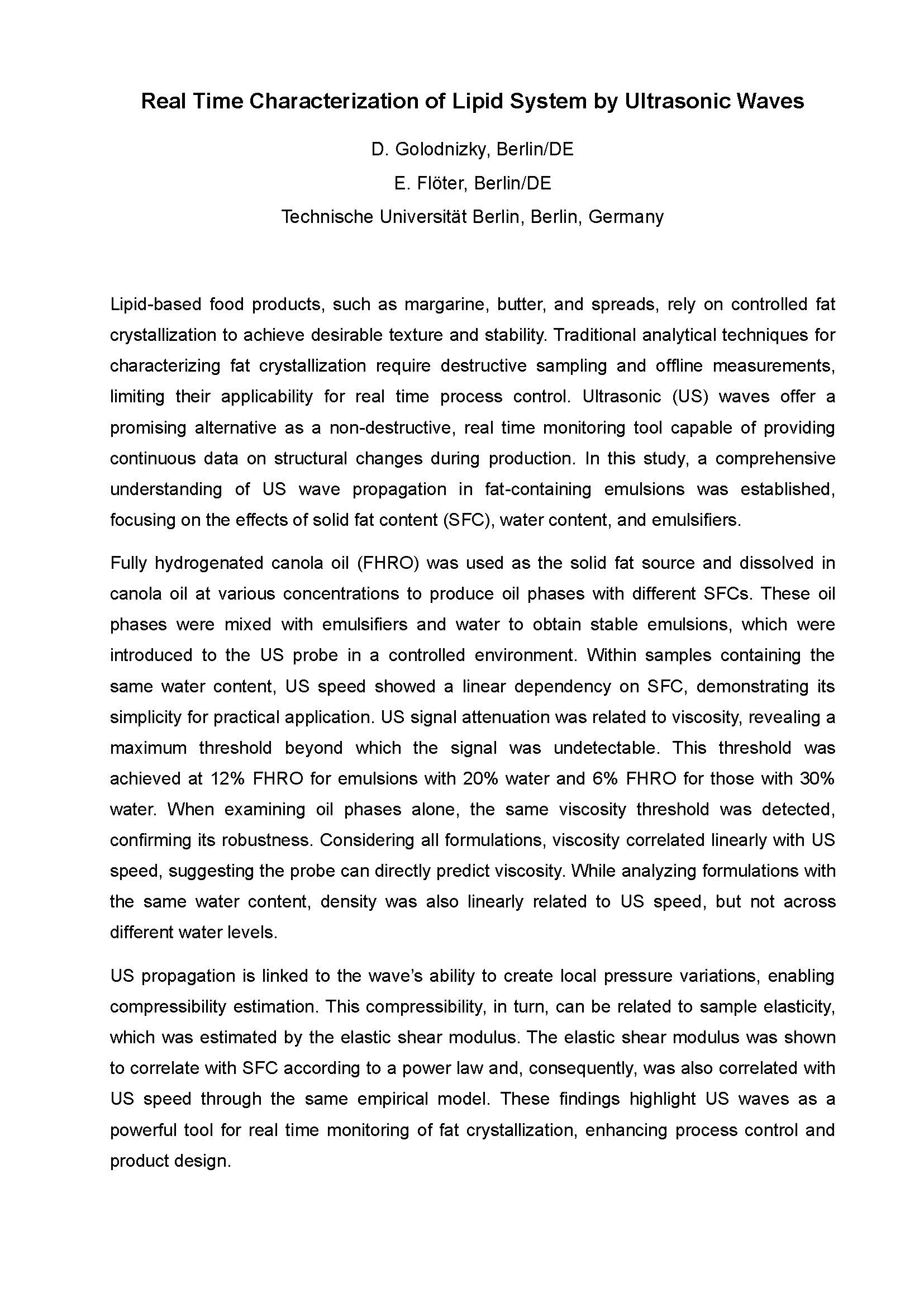Lipid-based food products, such as margarine, butter, and spreads, rely on controlled fat crystallization to achieve desirable texture and stability. Traditional analytical techniques for characterizing fat crystallization require destructive sampling and offline measurements, limiting their applicability for real time process control. Ultrasonic (US) waves offer a promising alternative as a non-destructive, real time monitoring tool capable of providing continuous data on structural changes during production. In this study, a comprehensive understanding of US wave propagation in fat-containing emulsions was established, focusing on the effects of solid fat content (SFC), water content, and emulsifiers.
Fully hydrogenated canola oil (FHRO) was used as the solid fat source and dissolved in canola oil at various concentrations to produce oil phases with different SFCs. These oil phases were mixed with emulsifiers and water to obtain stable emulsions, which were introduced to the US probe in a controlled environment. Within samples containing the same water content, US speed showed a linear dependency on SFC, demonstrating its simplicity for practical application. US signal attenuation was related to viscosity, revealing a maximum threshold beyond which the signal was undetectable. This threshold was achieved at 12% FHRO for emulsions with 20% water and 6% FHRO for those with 30% water. When examining oil phases alone, the same viscosity threshold was detected, confirming its robustness. Considering all formulations, viscosity correlated linearly with US speed, suggesting the probe can directly predict viscosity. While analyzing formulations with the same water content, density was also linearly related to US speed, but not across different water levels.
US propagation is linked to the wave’s ability to create local pressure variations, enabling compressibility estimation. This compressibility, in turn, can be related to sample elasticity, which was estimated by the elastic shear modulus. The elastic shear modulus was shown to correlate with SFC according to a power law and, consequently, was also correlated with US speed through the same empirical model. These findings highlight US waves as a powerful tool for real time monitoring of fat crystallization, enhancing process control and product design.
